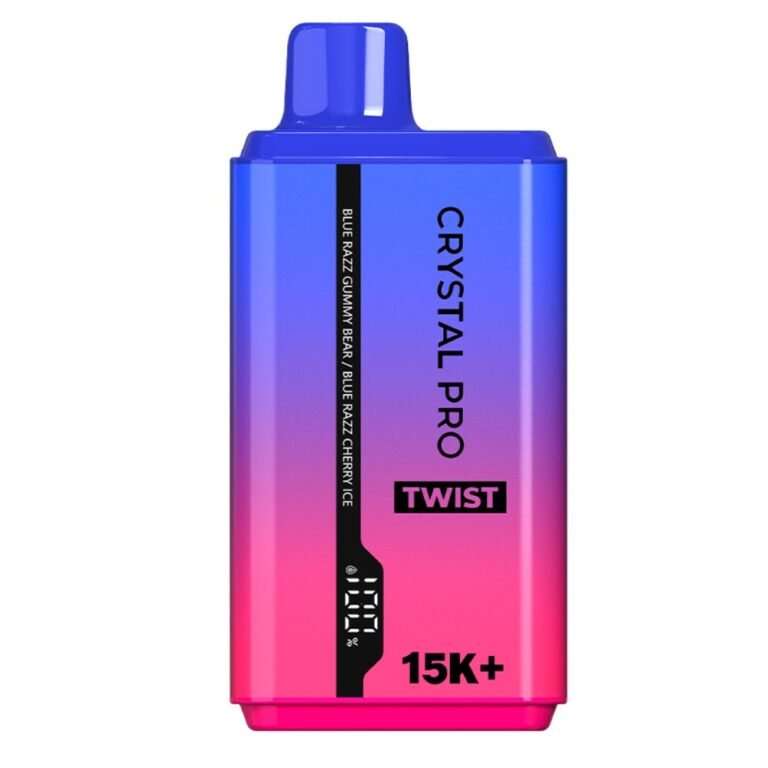How Crystal Liquid is Changing the Future of Technology and Industry
Crystal liquid, often referred to as a state of matter known as “liquid crystals,” has emerged as one of the most transformative substances in modern technology and industry. While its name may evoke images of sparkling liquids, crystal liquid is actually a highly functional material that bridges the gap between solids and liquids, offering unique optical, electrical, and mechanical properties. From the screens of smartphones to cutting-edge medical devices, crystal liquid is driving innovation in multiple fields. This article delves into how crystal liquid is shaping the future of technology and industry, exploring its applications, benefits, and the ways in which it is set to revolutionize various sectors.
Thank you for reading this post, don't forget to subscribe!What is Crystal Liquid?
Crystal liquid, or liquid crystal, is a state of matter that exhibits properties between those of liquids and solid crystals. While liquid crystals flow like liquids, they also have some structural properties of solid crystals. They are composed of molecules that can align in an ordered manner, yet still move freely within a liquid environment. This unique arrangement gives liquid crystals the ability to manipulate light, electricity, and other forms of energy, making them an essential component in a range of modern technologies.
There are several types of liquid crystals, including nematic, smectic, and cholesteric liquid crystals, each with distinct properties and applications. These materials have become integral to the functioning of various devices, especially in displays, sensors, and optical systems.
The Role of Crystal Liquid in Display Technology
One of the most well-known applications of crystal liquid is in display technology. Liquid crystal displays (LCDs) have been a mainstay in everything from televisions and computer monitors to smartphones and digital signage. The key advantage of LCDs is their ability to control light effectively, enabling the creation of high-resolution screens with low power consumption.
In an LCD, liquid crystals are sandwiched between two layers of glass or plastic, with electrodes that apply an electric field to the liquid crystals. Depending on the alignment of the liquid crystals, light is either allowed to pass through or blocked, creating pixels that can form images, text, and video. The high level of control that liquid crystals provide over light makes them perfect for use in displays, offering sharp, vibrant images.
Crystal Liquid in Modern Electronics
Beyond displays, crystal liquid plays an increasingly important role in various aspects of modern electronics. Liquid crystals are used in a wide variety of components and devices, including:
- Touchscreens: The touch-sensitive surfaces of modern smartphones and tablets often rely on liquid crystal technology to accurately detect pressure and touch gestures.
- Optical Switches: Liquid crystal technology is used in optical switches for fiber-optic communication networks. These switches allow for the modulation of light in optical fibers, improving the speed and efficiency of data transmission.
- LCD Projectors: Liquid crystal technology is also integral to projectors used in classrooms, businesses, and entertainment venues. These projectors rely on liquid crystal panels to project high-quality images onto large screens.
The versatility of liquid crystal materials enables them to be used in many different ways, enhancing the functionality, durability, and efficiency of a variety of electronic devices.
Crystal Liquid in Medicine and Healthcare
In addition to its prominence in consumer electronics, crystal liquid is also making significant strides in the medical field. Liquid crystals are increasingly used in medical devices, sensors, and diagnostic equipment due to their ability to respond to external stimuli such as temperature, pressure, and electric fields. For example, liquid crystal thermometers are widely used to measure body temperature, particularly in clinical settings. These thermometers provide a quick, accurate, and non-invasive way to track changes in body temperature.
Another area where crystal liquid is making an impact is in the development of advanced medical imaging systems. Liquid crystal lenses and optical devices are being used in medical imaging equipment like endoscopes and microscopes to improve the clarity and precision of images, which is critical in diagnosing and treating medical conditions.
Moreover, researchers are exploring how liquid crystals can be incorporated into wearable health devices, such as biosensors, that could monitor a variety of health metrics in real time. These innovations are paving the way for more personalized and efficient healthcare solutions.
Crystal Liquid in Environmental Sustainability
As industries across the world focus on reducing their environmental footprint, crystal liquid materials are emerging as key players in the field of sustainability. For example, liquid crystal displays consume less energy than traditional display technologies, which can help reduce electricity use in homes, offices, and public spaces.
Furthermore, liquid crystals are being utilized in energy-efficient smart windows. These windows can change their optical properties in response to changes in light or temperature, reducing the need for heating and cooling systems. By blocking out excess sunlight during the summer or allowing in natural light during the winter, smart windows can help reduce energy consumption and lower utility costs.
In the future, crystal liquid materials may also be used in the development of solar cells, as their ability to manipulate light could make them ideal for capturing and converting solar energy more efficiently.
Crystal Liquid in Nanotechnology and Future Innovations
The fascinating properties of crystal liquid are also being explored in the rapidly growing field of nanotechnology. Researchers are investigating how liquid crystals can be combined with nanoscale materials to create advanced nanomaterials with unique optical, mechanical, and electrical properties. These materials could be used in everything from high-performance electronics to advanced sensors and medical devices.
One of the most promising areas of research is the use of liquid crystals in the development of flexible electronics. By integrating liquid crystal materials into flexible substrates, scientists are working on creating electronic devices that are bendable, stretchable, and even foldable, without compromising performance. These innovations could lead to the creation of new types of wearable devices, flexible displays, and even flexible solar panels.
As we move into the future, it’s likely that crystal liquid will play an even more significant role in technological advancements. The versatility and adaptability of liquid crystals make them a valuable resource for researchers and industries looking to push the boundaries of what’s possible in electronics, healthcare, sustainability, and beyond.
The Economic Impact of Crystal Liquid
The widespread adoption of crystal liquid technologies has the potential to drive economic growth in several industries. As demand for more energy-efficient and high-performance devices increases, companies that produce and integrate liquid crystal technologies will see significant growth opportunities. For example, the display industry, which is heavily reliant on liquid crystal technology, is worth billions of dollars and continues to expand as new devices and applications are developed.
Similarly, advancements in the medical field, where liquid crystals are being used in diagnostic tools and medical imaging devices, could lead to the creation of new jobs and technologies, further boosting the economy. Additionally, industries focused on environmental sustainability will benefit from the energy-saving potential of liquid crystal technologies, which could lead to cost savings and environmental benefits on a large scale.
FAQs
1. What is crystal liquid? Crystal liquid, also known as liquid crystal, is a state of matter that exhibits properties between those of liquids and solid crystals. It is composed of molecules that can align in an ordered manner yet flow like a liquid, offering unique optical and electrical properties.
2. How is crystal liquid used in display technology? In display technology, crystal liquid is used in liquid crystal displays (LCDs), where it helps control the flow of light to create pixels that form images, videos, and text. It enables high-resolution, energy-efficient displays for devices like televisions, smartphones, and computers.
3. Can crystal liquid be used in medical devices? Yes, crystal liquid is used in various medical devices, including thermometers, diagnostic equipment, and medical imaging systems. Its ability to respond to changes in temperature, pressure, and electric fields makes it ideal for use in sensors and imaging technologies.
4. What are the environmental benefits of crystal liquid? Crystal liquid technologies are energy-efficient, which helps reduce electricity consumption. Additionally, liquid crystal materials are being used in smart windows, which can decrease the need for heating and cooling, leading to reduced energy consumption and lower utility costs.
5. How does crystal liquid impact the future of technology? Crystal liquid is driving advancements in several industries, including electronics, healthcare, and sustainability. With its unique properties, it is paving the way for more efficient devices, flexible electronics, and energy-saving technologies, making it a key material for future innovations.
Conclusion
Crystal liquid is a remarkable substance that is already making a significant impact across various industries, from electronics and healthcare to sustainability and nanotechnology. Its unique properties allow it to be used in a wide range of applications, driving innovation and offering solutions to some of the world’s most pressing challenges. As research and development continue, it’s clear that crystal liquid will play a crucial role in shaping the future of technology and industry, offering exciting possibilities for both businesses and consumers alike.






